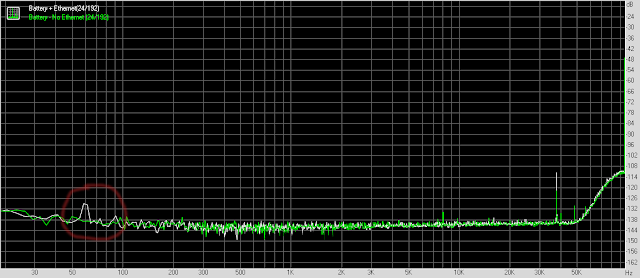tuga
Legal Alien
The collective...
Which one?
The collective...
Nevermind, sigh...Which one?
I wonder if this could be relevant:
Staying Well Grounded
Hank Zumbahlen (Analog Devices)
https://www.analog.com/media/en/ana...6/number-2/articles/staying_well_grounded.pdf
One would assume that the DAC has been earthed correctly, what are you paying that cash for. If it hasn't then we are back to sq's point that the audibility of the noise is poor design and not the network switch.Another one piece grounding:
Grounding Data Converters and Solving the Mystery of "AGND" and "DGND"
Walt Kester, James Bryant, Mike Byrne (Analog Devices)
https://www.analog.com/media/en/training-seminars/tutorials/MT-031.pdf
The Borg, obviously.Which one?
Well, I wouldn't rule out some form of intermodulation. Can you?
The ear is a measuring thing with physical properties that are well understood, a scientific instrument can measure further, wider and deeper than the ear, but still there is no measured proof of the low level of distortion that only an ear can hear. Ears are well understood things, what is less well understood is the influence of the brain on hearing and how external cues shape the sound we hear.Agreed and as I have mentioned before, my suspicion is that the (above audio band) noise causes IMD in the analogue stages of the DAC and if so one should look for IM distortion rather than noise in the ouputs. I am pretty sure I have read somewhere that even very low levels of this distortion are easily audible but less easily measured due to their low levels. It goes without saying that those who say they have no noise because they cannot hear it at full volume without any music playing are missing the point that the noise itself is above the audio band and the distortion only happens when music is playing.

"But I see a bump so I must be able to hear it! Oh, the Y axis scale, that doesn't matter does it....but look a bump, I hear it, I hear it!"Here you go again folks - something to see you through the dark winter nights
Already posted on pge 22 of this thread ... quite amazed this is still raging on unabated
Some actually relevant data

http://archimago.blogspot.com/2016/11/measurements-on-value-for-ethernet.html#more
Feast on that ...........
Here you go again folks - something to see you through the dark winter nights
Already posted on pge 22 of this thread ... quite amazed this is still raging on unabated
Some actually relevant data

http://archimago.blogspot.com/2016/11/measurements-on-value-for-ethernet.html#more
Feast on that ...........
I'm not going to lose any sleep over it being the root of some compounded evil.
A good start. You'll be busy for a whileI've deleted my post
Does Jussi say how that signal gets into the audio band, noting that filters after DACs remove those artefacts? You'll be telling me that people don't know how to design filters nextAccording to Jussi Laako the relevant range is above 20KHz and up to 1MHz.
Not much of a relevant feast...
On the signal you say? Then take network switch A, measure ADC signal out, take network switch B, measure ADC signal out, subtract one from the other and then post it on here./@tuga Still waiting for this...maybe Jussi can provide?
Snark. Is that all you’ve got?A good start. You'll be busy for a while
But clearly you are getting into letting theory get in the way of practice. Earthing or not, that cheap metal switch will have a clearly audible impact on most systems, not only those with a crappily designed streamer or DAC...I'm not getting into 'audiophile' switches but I do note that even the relatively cheap metal cased, 4 way, unmanaged switches have a mechanism to earth the casing...
One would assume that the DAC has been earthed correctly, what are you paying that cash for. If it hasn't then we are back to sq's point that the audibility of the noise is poor design and not the network switch.
I'm not quite sure why you have posted the link tbh, just indicates good ground design practice for mixed signal ICs. If you don't do it that-a-way then be prepared for poor performance...
Ah, so is it possible to conclude that network switches only impact poorly designed DACs?
Damn, that needs a smiley or I'll be taken the wrong way.
Maybe one day someone will risk using their unreliable ears. And then we can work out, together, what we need to measure to explain how we're hearing what we're hearing.Maybe one day someone will show a measurement for the output stage of a dac with this magic noise on it and it modulating back down multiple times into the audible band.
Seeing as there are plenty of tests showing no real noise on the output of even cheap dacs out past 300khz, and plenty of the same dacs with better than -130db for a 32tone IMD.
I'm not going to lose any sleep over it being the root of some compounded evil.
It maybe worth worrying about in a world where every device amplifies dc to light and no circuit has any psrr and low pass filters never existed. Back in the real world though....
